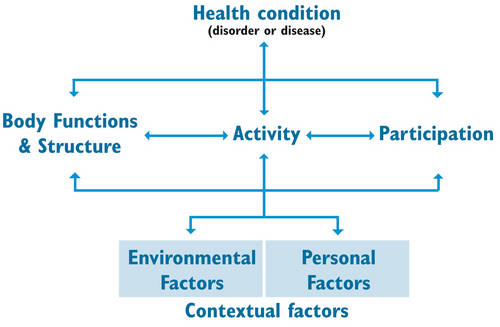Disablement Models
In PTA 100, you will learn more about the origins of physical therapy, including the development of the PTA and the PT/PTA team. PTAs are trained to perform physical therapy interventions under the direct supervision of a physical therapist. PTAs engage in critical thinking, data collection, patient education, and discharge planning with the physical therapist. In order to help better understand your clinical role as a PTA, it is important to understand the role of the physical therapist.
Disablement models have been adopted to better describe the impacts of disease on function. This shift from focusing on the disease to the individual and their respective losses in function is a progressive shift toward a patient-centered versus pathology-centered health care.
Physical therapy plays an integral role in customizing a plan of care to meet the needs and goals of the individual based on the multiple impacts of the disease and/or medical condition. Terminology used in the Nagi model is commonly used in physical therapy and health care to describe and track the affects of disease on movement and life roles.
Nagi Model
Key terms:
- Pathology
- External modifiers
- Impairment
- Functional limitation
- Disability
The Nagi Disablement model was adopted early as a means to describe how a disease or a pathology results in impairments, functional limitations, and disability and how this may vary across individuals. More recently, the Nagi Disablement model has been replaced with the World Health Organization (WHO) International Classification of Functioning (ICF) as a means to track how a health condition affects activity.
WHO ICF Model
Key terms:
- Body functions & structures
- Activity
- Participation
- Contextual factors
- personal
- environmental
The International Functional Classification of Disability and Health (ICF) model takes Nagi's patient-centered concept a bit further by expanding on how contextual factors impact activity. This shift in thinking represents an increased focus on how one disease or condition can affect different people in different ways based on the person's unique situation. There is also a focus on improving health vs. disease. In particular the WHO ICF model includes what the person can do (positive impacts) as well as what remains limited (negative impacts).

Self-Assessments
Test your understanding of Disablement model terminology and classification by working through these self-assessments.
